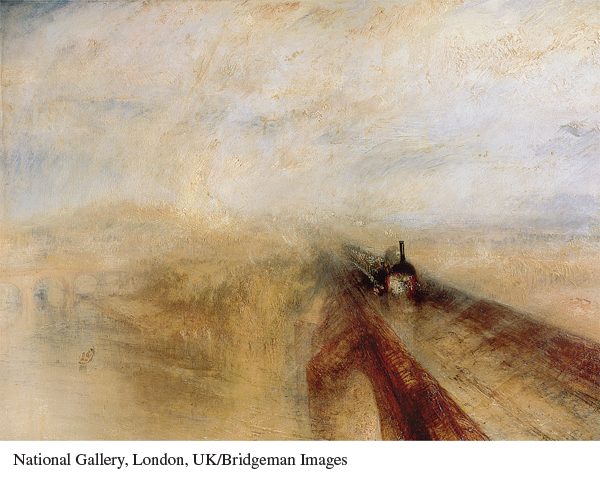A History of Western Society: Printed Page 658
Living in the Past
The Steam Age
O n Tuesday, October 6, 1829, a huge crowd gathered at the small town of Rainhill in northern England. Pedestrians and horse-
The last and culminating invention of the Industrial Revolution, the railroad dramatically revealed the power and increased the speed of the new age. Until the coming of the railroad, travel was largely measured by the distance that a human or a horse could cover before becoming exhausted. Steam power created a revolution in human transportation, allowing a constant, rapid rate of travel with no limits on its duration. Time and space suddenly and drastically contracted, as faraway places could be reached in one-
Racing down the track at speeds that reached 50 miles per hour by 1850 was an overwhelming experience. Some great painters, notably Joseph M. W. Turner (1775–1851) and Claude Monet (1840–1926), succeeded in expressing this sense of power and awe. Contemporary novelists also recorded their impressions of early train travel, as in this striking passage by Charles Dickens: “Through the hollow, on the height, by the heath, by the orchard, by the park, by the garden, over the canal, across the river, where the sheep are feeding, where the mill is going, where the barge is floating, where the dead are lying, where the factory is smoking, where the stream is running, where the village clusters . . . away with a strike and a roar and a rattle, and no trace to leave behind but dust and vapour.”‡ After surviving a terrible railroad crash, Dickens himself developed an intense fear of train travel. The increase in speed also led doctors to worry about the effects of the constant noise and vibration on passengers and crew.


Despite these concerns, the railroad quickly became a central institution of society. So did the massive new train stations, the cathedrals of the industrial age. Leading railway engineers such as Isambard Kingdom Brunel and Thomas Brassey, whose tunnels pierced mountains and whose bridges spanned valleys, became public idols — the astronauts of their day.

QUESTIONS FOR ANALYSIS
- Why was the train so revolutionary? What evidence is provided here for contemporaries’ perceptions of train travel?
- Why is the train less important in today’s culture?